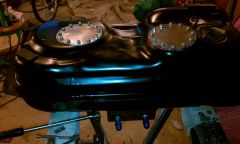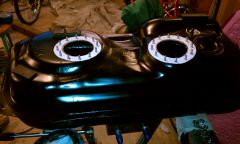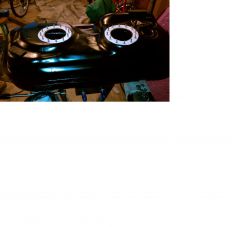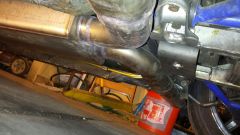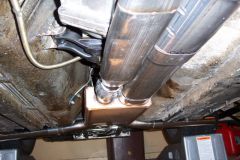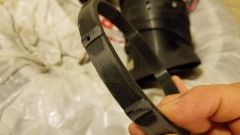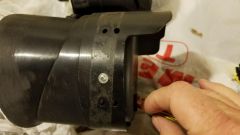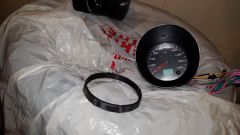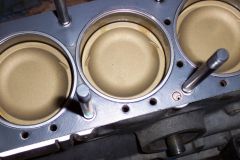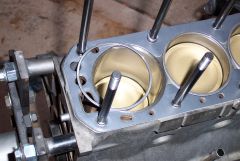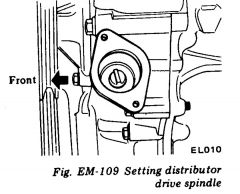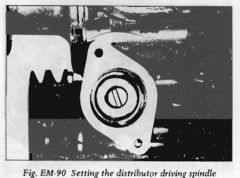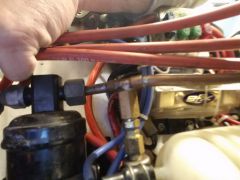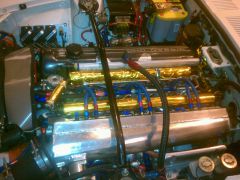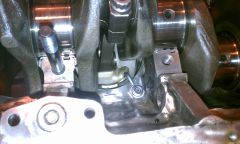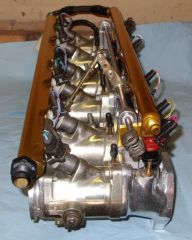-
Posts
2521 -
Joined
-
Last visited
-
Days Won
6
Content Type
Profiles
Forums
Blogs
Events
Gallery
Downloads
Store
Everything posted by TimZ
-
It looks like you have a stock engine from your sig - does this mean stock distributor and EFI? Timing and fuel at low load can make a huge difference in how much heat your engine creates as well. What is your timing at idle/cruise?
-
Where did you end up sourcing them from?
-
Assuming you're doing your own build, read through this thread: http://forums.hybridz.org/topic/106082-power-drain-from-timing-chain-valuable-build-tips-herein/ Prep work is probably more important than MSA vs Datsun Spirit
-
Nice Job! You need more tire!
-
A couple of suggestions since you have the tank apart right now anyway... Leave a couple of access ports at the top so that you can service the internals if necessary - I did this: The fuel lines to the tank are just soldered in - not hard to remove at this point and you can weld in a 3/8" or 1/2" NPT union and then install larger internal pickup and return lines and AN fittings. Seriously consider using the Holley hydramat pickup - it's a little pricey, but completely eliminates the need for a surge tank/swirl pot and also doubles as a pre-filter for the pump. I'm currently using these on my car (3 in parallel across the width of the tank - I have a really big pump) and they are working great.
-
Speaking of this, the main reason you can get away with the smaller line with EFI is that the pressure drop it induces is less of an issue when you are running the higher fuel pressures that EFI requires. The regulator is at the rail, and the EFI pump generally has enough over capacity pressure-wise to compensate. What Chickenman is getting at is when you require just 4-5psi at the carb, those losses become a very significant part of the equation. Putting the regulator at the pump is really not helpful in this case either, since the pressure loss through the line is a linear function of restriction times fuel flow. So the pressure regulation at the carb would be terrible - if you were to set the pressure at idle to 4psi you would likely end up with 2psi or less at full flow. Conversely if you tried to set the fuel pressure to maintain 4 to 5 psi at full flow you would almost certainly go over the pressure spec for the carb at idle. This is why carbs pretty much always need bigger lines than EFI.
-
Yes, exactly. You have to get all the way to the root of the crack for the length of the crack, though. This will eliminate the stress riser and stop the cracking.
-
How deep does the hole go? It's just a coolant passage and it likely opens into a larger coolant passage inside the head. At the surfaceit looks like the crack doesn't run very deep - if the hole doesn't run real deep you could likely take a die grinder with a small carbide bit and just grind the crack out and leave the hole oblong.
-
A 4 barrel calibrated for gasoline will _not_ help with e85. The required mixtures and jetting for E85 are very different. You will need to get a carb that was calibrated for E85 - do a Google search for E85 carburetor.
-
Assuming you need the driveshaft shortened and not lengthened, you just need a new slip yoke that fits the 700r4, and a matching tube yoke, and to have it mated to your driveshaft, cut to the proper length and balanced. If you are planning on keeping the flange and u-joint at the rear of the shaft, a 1310 series u-joint will be plenty strong. Here's an example: https://www.summitracing.com/parts/sdh-2-3-6081x?seid=srese1&cm_mmc=pla-google-_-shopping-_-srese1-_-dana-spicer-drivetrain-products&gclid=CKasltqBhtQCFd23wAod7NoHHA Obviously if you need to lengthen the driveshaft you are pretty much starting over. The 1310 series u-joints (non greasable) at both ends should still be plenty strong, unless you are making a LOT of torque on slicks...
-
Use a core plug (aka freeze plug)
-
Awesome - that was pretty much what I was going to suggest if you hadn't already done it! I figured it was a good thing to make clear in the event that others want to reproduce what you've done.
-
That looks like a nice job of tapping the head and a nice way of running all the lines together and routing back to the thermostat housing, using some existing hardware for the manifold. One dumb question though - how did you get the air out of it,since the water manifold is sitting higher than your fill point? Is there a bleeder/fill point that isn't visible in the pics?
-
If you're going to cut into your tank for any of these solutions, you might consider this: https://www.holley.com/products/fuel_systems/hydramat/ It's more effective than baffles or a swirlpot/surge tank and MUCH easier to install (assuming you have to open the tank up anyway) and much simpler than multi-pump solutions.
-
Okay - 97.8% bad.
-
Well, yes and no - for a NA engine you can likely get away with it, but the lack of vacuum correction does limit your injector's dynamic range. For boosted applications the dynamic range of the injector is so compromised that it would be a _really_ bad idea.
-
Maintaining fuel pressure with the pump off is desirable for prevention of vapor lock in hot weather and for faster startup. Is it that much trouble to tee into the line at the FPR and look? "I doubt" is not helpful. You're down to either the FPR is fine and you have a cracked vacuum line going to it (in which case your new FPR will do the exact same thing), or your FPR is bad. Checking the vacuum at the FPR is what tells you which situation you have. If this is too much work for you then we can't help you further.
-
I agree that the fact that it's only dropping by ~4psi between zero vacuum and 19"Hg is a bit more troubling than the base pressure - where are you measuring the idle vacuum? Could be a cracked/leaking vacuum connection to the regulator. Do you see 19"Hg if you tee into the vacuum line directly at the regulator? As far as fixing the pump pumping "too much" at idle -there is no fix for this, it's doing what it's designed to do. The pump is going to pump what it pumps for the given voltage and line pressure. It's the regulator's job to bleed off the excess flow to maintain the desired pressure. If you look at the flow chart below - if you are running at 12V (measured at the pump) at idle and want to have a 30psi system pressure, the total flow of the injectors plus the FPR's bypass flow _must_ equal ~65gph. For the same conditions and 13.5V the Total flow from the pump must now be 75gph.
-

Swapped in a 363... lol too much power??!
TimZ replied to thedarkie's topic in S30 Series - 240z, 260z, 280z
That was the only pic from his thread, and it was before he installed spacers. But it did serve to illustrate the point. Actually he could have gained quite a bit more clearance had he put the entire threaded sleeve above the bulge and picked a slightly different spring (either shorter or softer) that would allow him to maintain the same ride height. Like I said though it does get tricky to get the right combination. -

Swapped in a 363... lol too much power??!
TimZ replied to thedarkie's topic in S30 Series - 240z, 260z, 280z
You might also consider the Mickey Thompson ET Street S/S, which is available in 255/50-16, and a minimum rim width of 7". A bit taller at 26.4" than the 275/40-17s (26.0"), but should be easier to fit width-wise. The other thing to consider from Clifton's thread was that he was running a short enough spring to allow him to put the lower spring perch above the bulge in the tire, which allowed more inboard offset... 245s are about all you can do if the lower spring perch is below the tire bulge. If you decide to do this you also need to be a bit carefull to select a spring that gives you the right combination of spring rate, ride height and that doesn't bind the coil at full bump. You start running out of room pretty quickly with the perch set that high! -

Any cam experts? Colt Cams adv duration vs @0.05"
TimZ replied to turbogrill's topic in Nissan L6 Forum
Is something wrong with these? http://iskycams.com/cart/index.php?main_page=product_info&cPath=99&products_id=2119 Isky used to make titanium retainers for these - looks like they don't any more. Part number was 1624Ti-12, in case you can find some on ebay or someplace...

